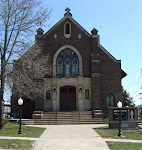written by Mary Katherine Laird
For most of us, Gonzaga just is another name in the NCAA tournament. But when the March Madness is over, do we know anything about the origin of Gonzaga University's name. Who was St. Aloysius Gonzaga? He is an Italian Jesuit saint of the 16th century. In 1887 when Father Joseph Cataldo, an Italian born Jesuit, founded Gonzaga College in Spokane, Washington, it seemed fitting to name the new school after his fellow Jesuit and fellow Italian, St. Aloysius Gonzaga..
Aloysius (Luigi) Gonzaga , a member of the noble House of Gonzaga, was born at his family's castle on March 8, 1568 Castiglione in Northern Italy in what was then part of the Papal States. At eight he was placed in the court of Francesco de'Medici in Florence, where he remained for two years. When he was twelve, he came under the spiritual guidance of St. Charles Borromeo and from him received First Communion. In 1581 Aloysius went with his father to Spain. He and his brother Ridolfo were made pages of James, the son of Philip II. After reading a book about Jesuit missionaries in India, he felt strongly that he wanted to become a missionary himself. He started practicing by giving catechism classes to young boys in Castiglione in the summers, and by repeatedly visiting the Capuchins and Barnabites in Casale Monferrato, where the Gonzaga family spent the winter. He also adopted an ascetic life-style. He returned to Italy in 1584. Despite serious objections from his father, Aloysius still wanted to become a priest. Several members of his family worked hard to persuade him to change his mind. When they realized that there was no way to make him give up his plan, they tried to persuade him to become a secular priest, and to arrange for him to become a bishop. . If Aloysius became a Jesuit he would renounce any right to income from property or status in society.. His family was afraid of this, but their attempts to persuade him not to join the Jesuits failed; Aloysius was not interested in higher office and still wanted to become a missionary. After securing his father's reluctant permission, he renounced his heritage in favor of his brother,a proceeding which required the approval of the emperor, as Castiglione was a fief of the empire. He presented himself to Father Claudius Acquaviva, who was then General of the Society in November, 1585. Before the end of his novitiate he proved himself a brilliant student in philosophy and mathematics. The young scholar in fact distinguished himself, when in Spain , by a public examination not only in philosophy, but also in theology. Aloysius was actually asked to moderate his asceticism somewhat, as it disrupted his relationship with the other novices--they found it difficult to speak with him when he isolated himself. In part, this may also have been caused by his upbringing, where he had never learned to relate to people outside the court. Aloysius' health continued to cause problems. He also suffered from kidney disease, a skin disease, chronic headaches and insomnia. He was sent to Milan for studies, but after some time he was sent back to Rome because of his health. On November 25, 1587, he took the three religious vows of chastity, poverty, and obedience. (He is believed to have taken a private vow of chastity at the age of 9.) In February and March 1588, he received the lower ordinations, and was studying theology to prepare for the priesthood In 1589, he was called to Mantua to mediate between his brother Ridolfo and the Duke of Mantua. He returned to Rome in May 1590. Later that year, Aloysius had a vision in which the Archangel Gabriel told him that he would die within a year.
In 1591, a plague broke out in Rome. The Jesuits opened a hospital for the stricken, and Aloysius volunteered to work there. He was allowed to work in a ward where there were no plague victims, as they were afraid to lose him. As it turned out, a man on his ward was infected, and on March 3, 1591 (six days before his 23rd birthday) Aloysius showed the first symptoms of being infected. It seemed certain that he would die in a short time, and he was given Extreme Unction. To everyone's surprise, he recovered, but his health was left worse than ever. While he was ill, he spoke several times with his confessor, Cardinal Robert Bellarmine. Aloysius had another vision, and told his confessor that he would die on the Octave of the feast of Corpus Christi.. On that day, which fell on June 21, he seemed very well in the morning, but insisted that he would die before the day was over. Cardinal Bellarmine gave him the sacraments, and recited the prayers for the dying. Aloysius Gonzaga died just before midnight on June 21, 1591. He was buried in the Church of the Most Holy Annunciation, that had later become the Church of St. Ignatius of Loyola in Rome.
Aloysius was beatified only fourteen years after his death by Pope Paul V, on October 19, 1605. On December 31, 1726, he was canonized together with another Jesuit novice, Stanislaus Kostka by Pope Benedict XIII, who also declared him to the patron saint of young students in 1729. In 1926, he was named patron of Christian youth by Pope Pius XI. Owing to the manner of his death, he has always been considered a patron saint of plague victims
In art, St Aloysius is shown as a young man wearing a black cassock and white surplice. His emblems are a lily (innocence); a crucifix ( piety and sacrifice); a skull, (his early death); and a rosary, (devotion to the Virgin Mary.) St. Maria Magdalena de Pazzi saw him in a vision in a great glory because he had lived a particularly strong interior life.
Souces:
Catholic Encyclopedia
Wikipedia
Gonzaga University Website


